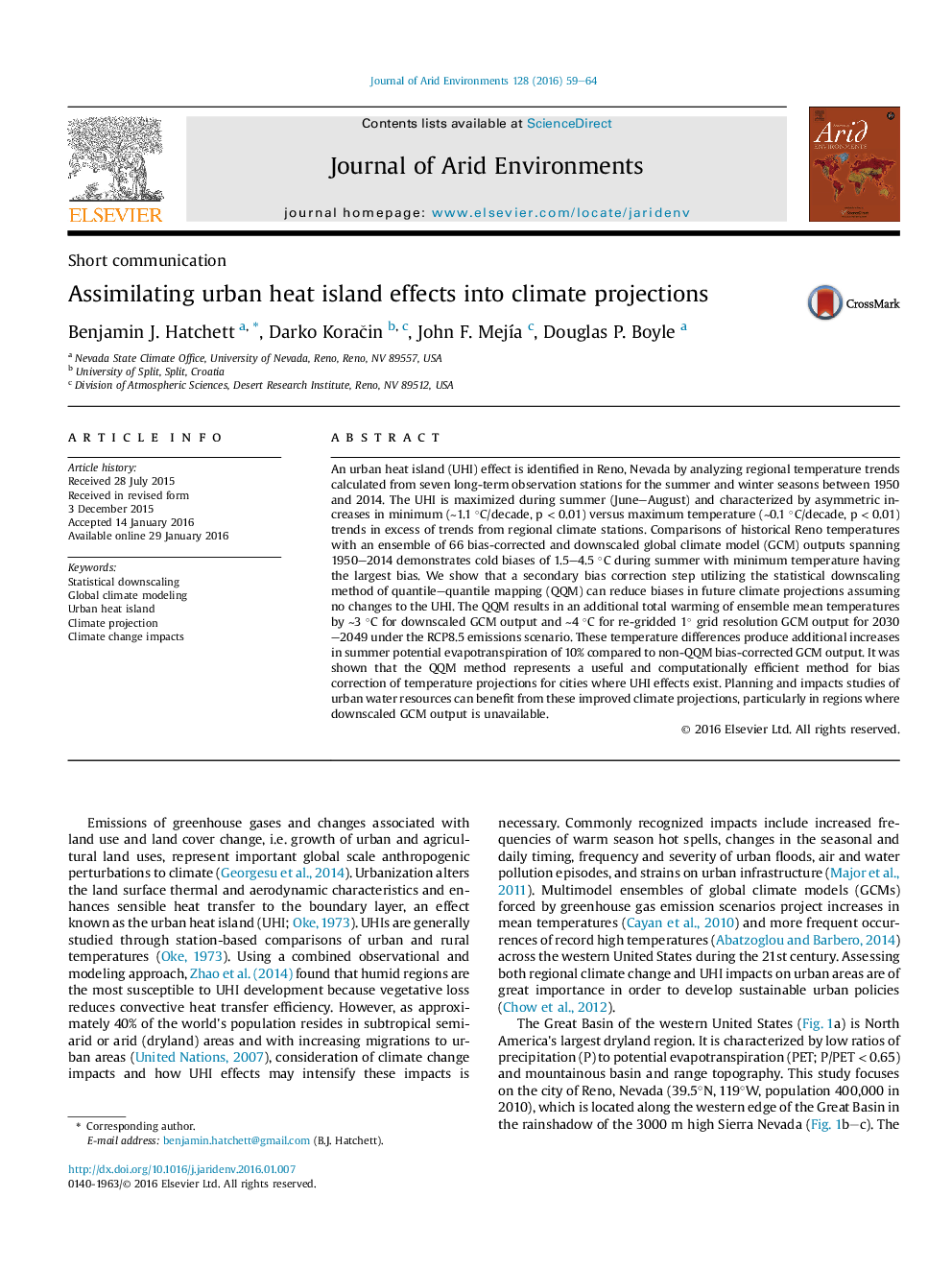| کد مقاله | کد نشریه | سال انتشار | مقاله انگلیسی | نسخه تمام متن |
|---|---|---|---|---|
| 4392778 | 1618231 | 2016 | 6 صفحه PDF | دانلود رایگان |
• An urban heat island effect (UHI) is identified in Reno, Nevada, USA.
• Global climate models show cold temperatures biases in the urban area.
• Projected temperature biases are efficiently reduced by a bias correction step.
• Bias correction increases summer potential evapotranspiration rates by ∼10%.
An urban heat island (UHI) effect is identified in Reno, Nevada by analyzing regional temperature trends calculated from seven long-term observation stations for the summer and winter seasons between 1950 and 2014. The UHI is maximized during summer (June–August) and characterized by asymmetric increases in minimum (∼1.1 °C/decade, p < 0.01) versus maximum temperature (∼0.1 °C/decade, p < 0.01) trends in excess of trends from regional climate stations. Comparisons of historical Reno temperatures with an ensemble of 66 bias-corrected and downscaled global climate model (GCM) outputs spanning 1950–2014 demonstrates cold biases of 1.5–4.5 °C during summer with minimum temperature having the largest bias. We show that a secondary bias correction step utilizing the statistical downscaling method of quantile–quantile mapping (QQM) can reduce biases in future climate projections assuming no changes to the UHI. The QQM results in an additional total warming of ensemble mean temperatures by ∼3 °C for downscaled GCM output and ∼4 °C for re-gridded 1° grid resolution GCM output for 2030–2049 under the RCP8.5 emissions scenario. These temperature differences produce additional increases in summer potential evapotranspiration of 10% compared to non-QQM bias-corrected GCM output. It was shown that the QQM method represents a useful and computationally efficient method for bias correction of temperature projections for cities where UHI effects exist. Planning and impacts studies of urban water resources can benefit from these improved climate projections, particularly in regions where downscaled GCM output is unavailable.
Figure optionsDownload as PowerPoint slide
Journal: Journal of Arid Environments - Volume 128, May 2016, Pages 59–64
